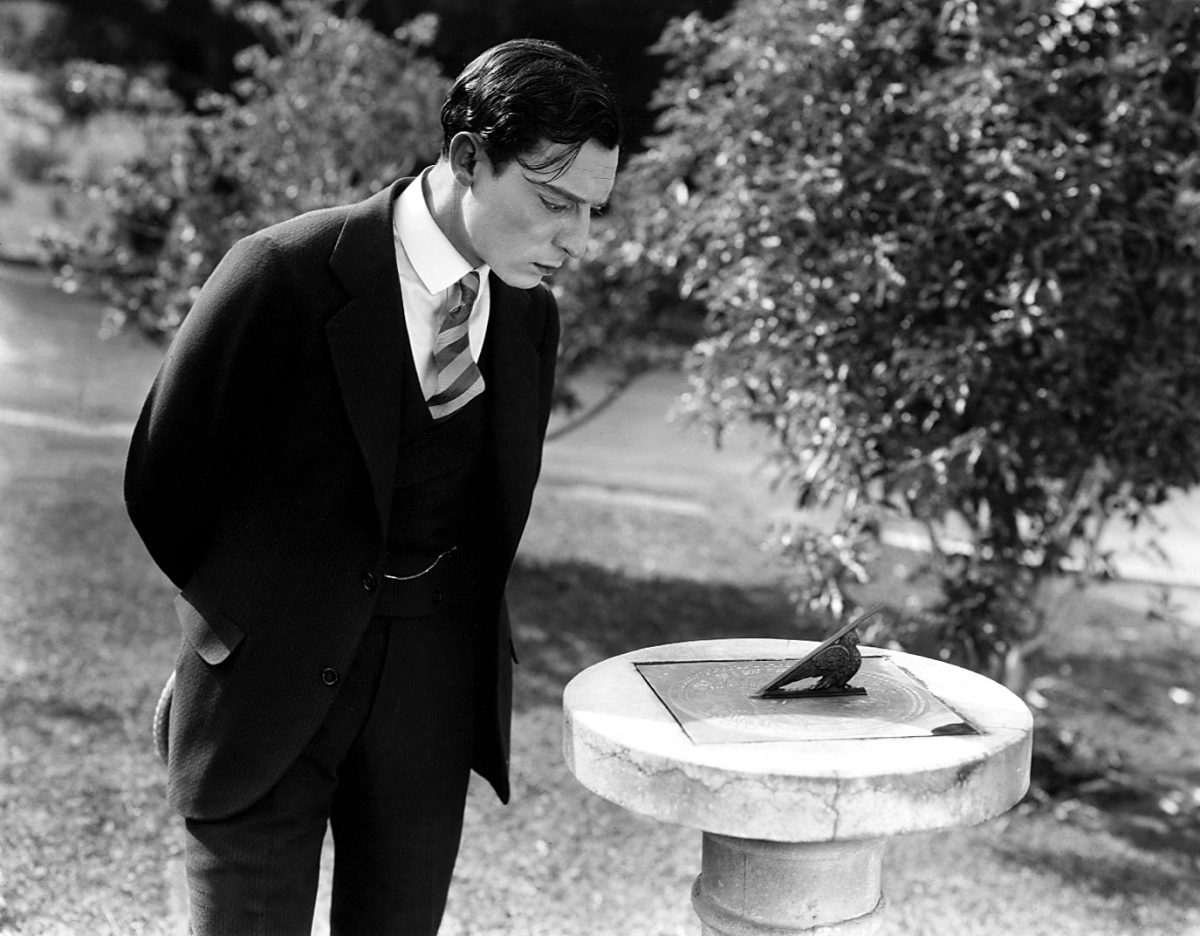Seven Chances

Buster Keaton
USA – 1925

Screenplay: Roi Cooper Megrue, Clyde Bruckman, Jean C. Havez, Joseph A. Mitchell
Cinematography: Byron Houck Elgin Lessley
Production: Buster Keaton Productions (A Metro-Goldwyn Production)
Language: Silent
Duration: 56 min
Color: Black and White, Color (2-strip Technicolor for the opening sequence)
Synopsis: On the morning of his 27th birthday, James Shannon, a young lawyer in need of money to save his partner from jail, is informed that he stands to inherit $7 million if he is married by 7 o’clock that evening. He proposes to his sweetheart, but she rejects him when he states that he must marry a girl—any girl—in order to come into a fortune. At the country club, his partner picks out seven girls and Jimmy proposes to each in turn, but is refused by all. In town, he desperately proposes to anyone in a skirt, including a Scotsman. Meanwhile, the partner puts a story into the paper detailing Jimmy’s predicament and advertising for a bride. At the church altar early next morning, Jimmy finds the place full of candidates. He narrowly escapes, happily finding out that his sweetheart has forgiven him. Jimmy is pursued by a mob of outraged would-be brides, and after a wild chase, arrives safely at Mary’s house just in time to be married on the stroke of seven.
Notes:
Buster Keaton’s films are remarkable for their incongruity and irrationality. Almost always, there are large-scale chase sequences or elaborate object or mechanical-related sight impossibilities punctuated by Keaton’s physical performance. Hundreds of policeman scurry through the streets after him (Cops, 1922); cattle and bulls enter the city and seem to replace human activity (Go West, 1925); houses leave their moorings and fly (Steamboat Bill Jr., 1928); hundreds of brides chase Buster through the streets (Seven Chances, 1925); a house spins like a child’s top (One Week, 1920); hundreds of tiny holes form in a boat causing it to sink as Buster frantically bails water (The Boat, 1921); or, Buster performs every sporting event in perfect form as he rushes to save the girl from the college big men (College, 1927). The comedy stems from the sheer implausibility of the circumstances, which yields exciting moments of “involuntary surrealism.”
What is appealing is that Keaton calls attention to the performance instead of the narrative, which is rooted in early cinematic practices of spectacle. As early film scholar Tom Gunning has noted, “[It] was precisely the exhibitionist quality of turn-of-the century popular art that made it attractive to the avant-garde – its freedom from the creation of a diegesis, its accent on direct stimulation.” Keaton’s cinema is one of exhibitionism; the moments in his films where there is a break from the narrative work as avant-garde forms of spectacle. Keaton came from vaudeville, so it comes as no surprise that he would perform acts in the middle of a narrative film, an impulse that resulted in acute, great humor. The value of Keaton’s comedy, in terms of the avant-garde, rests on his capacity to fracture the logic of narrative continuity. Another performer who interrupted narrative through the irrational was Groucho Marx. Unlike Keaton’s focus on the physical, Marx essentially performed stand-up comedy, which came from his own training in vaudeville and theater. In films like Duck Soup (1933), Groucho tells jokes, ad-libs, and offers non sequiturs to the spectator, or really, for the spectator’s amusement, which means they are essentially not part of the narrative. We see this tradition later on with comedians like Woody Allen, who constantly tells jokes for the audience, but not for the characters in the films themselves. Comedy is subjective because the viewing experience depends upon one’s acceptance of the words/actions/behaviors of the performance. Avant-garde comedy also forces us to recognize alternative modes of production: we receive pleasure through the visible and cognitive recognition of departure from stylistic or thematic norms, causing excitement in the spectator. Laughing at subversive behavior can occur in any genre, but the comedy in or of avant-garde cinema is subversive because it operates on both an intellectual and emotional level, where we are allowed freedom to consider the implausibility operating within the possible.
Notes based on Verrone, William. “Humor and the Avant-Garde.” Journal Of Popular Culture 47, no. 4 (August 2014): 709-726.


